VOLUNTEERS
 Larry Rice | Liberty Hospital
Larry Rice | Liberty Hospital
It all started in 1989, when Larry Rice was a language arts and social studies teacher for the Liberty public school system. A new requirement for teachers to do volunteer work led Rice to volunteer in the gift shop at Liberty Hospital. “I would go after school one night a week and cashier for the gift shop from 5–8 p.m.,” Rice says. That weekly regimen continued until 1995, when a management position opened for the gift shop. “They asked me if I would do it, but I had one more year to teach before I would retire,” he says. “Knowing I would like to try the manager’s position, my wife agreed to help me the first year so I could finish my teaching career.” From 1996 to Dec. 31, 2011, Rice ran the shop. His duties included meeting with vendors, ordering merchandise, being responsible for all financial aspects of the shop, managing the gift shop committee, and managing and assisting shop cashiers.
As 2011 counted down, Rice handed over his keys, retiring after more than 30,000 hours of volunteer service. “What I found most satisfying about working in the gift shop was the satisfaction I felt in meeting the needs of the hospital personnel, the patients and those who visited the hospital,” he says.
Just because Rice’s gift-shop responsibilities have come to an end doesn’t mean his volunteer efforts have. “Although I will not be there every day or have all the responsibility of the gift shop, I can still meet the needs of my fellow man,” he says. He has been trained to work in the oncology department, surgery waiting room, patient registration, at the information desk and doing the menu cart.
“Volunteering is an incurable disease,” he contends. “Once you have it in your blood, there is no getting rid of it!”
 Lou Paris | North Kansas City Hospital
Lou Paris | North Kansas City Hospital
Not even bad weather keeps Lou Paris from showing up for “work.” With more than 22,500 hours of volunteer service at North Kansas City Hospital, Paris can be seen around the hospital most days of the week. It has even been said that she’s arrived for work during torrential weather, when other staff members couldn’t. “I work four days a week, and a lot of time five days because I substitute on my day off,” she says. “I work from about five, to nine, sometimes 10 hours. A lot of the time, I’ll work a double shift; and, if I work a double shift, I’m here a lot longer.”
Paris started volunteering her time years ago with the encouragement of one of her friends. “I had a friend who worked down here, and she wanted me to come down with her, so I did. And so here I am, 23 years later, still here.”
Over the past two decades, Paris says, the volunteer program has expanded to include more work opportunities and more participants. She currently spends most of her time helping at the hospital’s information desk, in the gift shop, surgery waiting room and the catheterization lab.
“I like the information desk because I get to see more people and help more people that you don’t ordinarily see,” she says. “I used to teach preschool and I see a lot of my students here. It’s good to see all these people.”
The hospital isn’t the only place Paris gives of her time. She is also the secretary at her church. “I like to help people,” she says. “It’s the satisfaction of being able to help others. There are times when I need help myself, and I appreciate the help. If I can help someone else, it makes me feel good.”
 Russell Watson | St. Joseph Medical Center
Russell Watson | St. Joseph Medical Center
Russell Watson learned volunteer service by example: Both of his parents logged thousands of hours as volunteers at Lee’s Summit Hospital when they were living at John Knox Village. His mother’s service, in particular, taught him something else: The potentially grinding nature of idle time. “I find that if I do not volunteer my service every day that time passes slowly,” he says. His mother lived to be 99½, and with a bloodline like that, the prospect of 36 slow-passing years wasn’t very appealing when he retired at the end of 1998.
Six weeks later, he logged his first shift at St. Joseph Medical Center. He still recalls the date: Feb. 10, 1999. His first duties? Outpatient secretary in the radiology department. Since then, this certified public accountant by training has logged so much time in so many departments, it’s a surprise he’s not a licensed physician by osmosis. Over the course of nearly 20,000 hours—often working five-day weeks—he has worked in information technology, administration, finance, radiology, endoscopy, registration, central services, accounting and the gift shop.
Jeri Grimes, director of volunteers services for the hospital, credits Watson’s contributions in leading process improvements in most of those settings, and says “he’s been a valuable resource for other volunteers by providing support and guidance.”
He was the hospital’s Volunteer of the Year in 2003 and has been involved extensively with St. Joseph’s auxiliary, serving as president in 2005. Watson takes pride in the cost savings he helps the hospital realize, but there’s an ancillary benefit, he says: Effective volunteer service helps the hospital create a setting where patients and their families can see the value of good service and care.
“The volunteer,” says Watson, “can reflect on their work and earnestly say, ‘Well done, good and faithful servant.’” I gave of myself, but really received much more in return.”
MEDICAL MISSIONS
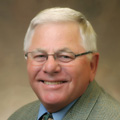 Larry Evans | Saint John Hospital/Leavenworth Oral Surgeons
Larry Evans | Saint John Hospital/Leavenworth Oral Surgeons
Every winter, thousands of Americans flock to Jamaica, swapping snow and sleet for sand and surf. Larry Evans goes there, too, but he sees a part of the island nation not visible from a hotel balcony or timeshare window. In the impoverished enclave of Lawrence Tavern, Evans goes to work at the Forest and Eleanor Haggard Medical Clinic, founded in 1980 by the late Lenexa minister and his wife. Thousands of other volunteers have answered the call to serve at the clinic, and Evans has been making the annual trek for 20 years.
The need there is profound, and the workload is crushing. “I’ll do a minimum of 60 surgeries a day,” he says, “and the people stand in line for hours just to see us.” And with no electricity and limited pain medicine, surgeries consist of leaning a chair against a tree in the sun. In a matter of a few days, Evans will pull between 500 and 800 teeth. “It’s a very humbling experience,” he says, “and to see a smile on their faces because they know they won’t be in pain anymore is very rewarding.”
The trip to Jamaica is typical of the commitment Evans has made to making the world a better place. That task starts with health care in Leavenworth, where the oral and maxillofacial surgeon practices, and in neighboring Wyandotte County. He has served as president of the medical staff at the former Bethany Medical Center, and was on that hospital’s board of directors. Evans has also served on the medical staffs at Saint John Hospital and Providence Medical Centers.
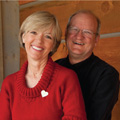 Bev Chapman and Steve Hall | Village Presbyterian Church
Bev Chapman and Steve Hall | Village Presbyterian Church
In the beginning, Bev Chapman wanted to do a news series on medical missions and Steve Hall had always wanted to teach an adult to read. Through this husband-wife duo’s combined passion for helping others, they have been leading annual medical mission trips to the Dominican Republic for 14 years through their church, Village Presbyterian. Though neither has a medical background [Chapman is a five-time, Emmy-award winning writer and reporter for KMBC, and Hall is in the printing business with Boelte-Hall], they coordinate trips to La Romana, where volunteer doctors and nurses hold small clinics in rural areas—“bateyes”—surrounding sugar-cane fields. “We call it setting our compass,” says Chapman, “our annual trip south to find true direction in our lives. We always come back looking at the way we live and looking at the way our patients live and trying to decide who’s richer.”
For these week-long trips, Chapman and Hall make arrangements for transportation and accommodations in La Romana [where the volunteers stay], determine a budget, recruit team members, collect fees, educate participants on what to expect, coordinate the agenda, and order medical and other supplies, Hall explained.
“Our patients are usually the families of Haitian sugar-cane cutters who would never be able to see a doctor without these trips,” says Hall. “We usually see 100 to 120 patients per day.”
On their first trip as team leaders, Chapman recalls wandering through a village and finding a woman who told her that she had a sick granddaughter at home. “When I got there, I discovered a 4-year-old girl in a small bed who was burning up with fever.” Because Chapman made sure a doctor could visit the child [who was suffering from pneumonia], the girl recovered.
“To this day, I can’t tell the story without wiping tears,” she says. “As a TV reporter for so many years, you hope you do some good. You hope parents who see your reports learn how to install a child safety seat, buy smoke detectors, wear helmets. But to come face-to-face with a child and know that I was part of a chain that saved her life? It was profound.”
 Richard Magie | Kansas City University of Medicine and Biosciences
Richard Magie | Kansas City University of Medicine and Biosciences
At a young age, Richard Magie witnessed firsthand how kindness and compassion can impact patients. “I had such respect for our family doctor in Hutchinson, Kan., and the way he treated people, that I always try and do the same thing,” he says. That same physician, he said, helped him understand the importance of treating everyone equally. “He meant so much to me growing up that I wanted to be that kind of individual for my patients so they knew somebody outside the family really cared about them.”
An assistant professor at the Kansas City University of Medicine and Biosciences, as well as the chair of pediatrics, and medical director of KCUMB Physician Associates, Magie says a significant part of his practice has included treating patients who might not be able to receive health care through traditional channels—whether that’s seeing uninsured patients in his office, while he’s doing health screenings at local grade schools or traveling to other countries. He’s been on more than two dozen mission trips to Mexico and Guatemala, meeting with infants and children and their parents. “Once you see the rewards and services you can provide, even if it’s only a hug, it’s very addicting,” he says. “It’s just so fulfilling. I get so much more out of it than I ever give.”
From those trips, Magie says he has learned to take more time and listen more to patients, and put a larger emphasis on the relationships with them. “We always complain that we don’t have enough time. We’re always looking at our watches,” he says of Americans in general. But in Mexico or Guatemala, “Most of the people you meet don’t even have watches, but they always have time for each other. It makes you realize what’s more important is relationships you have with the people that are brought into your life.”
LIFETIME SERVICE
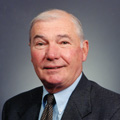 Fred Burry | Children's Mercy Hospital
Fred Burry | Children's Mercy Hospital
Fred Burry helped make Children’s Mercy Hospital what it is today. Over a nearly 50-year career there, Burry served in a number of capacities, including chief of medical education, chief of infectious disease and, leading up to retirement, he spent about 15 years as the executive medical director.
That role, he said, “involved the hiring of many, many new people. I was blessed to have the resources to bring special people to Kansas City. It added a great deal to the things we needed to do at Mercy.” Burry, who said he always had been interested in biological sciences growing up, says he liked working with children, especially, because of their resilience. “Even though we took care of a great many very, very sick children, the outcomes were oftentimes good or better than good.”
What he remembers and recognizes as being particularly rewarding about his life-long career at Children’s Mercy were the major achievements of the hospital. “The thing I am most pleased about is the expansion of the hospital,” says Burry, who retired in 2010, “and what we’ve been able to do in the community as a hospital that takes care of all-comers. It’s really a blessing to be able to have the resources to do what we were able to do. While the hiring of certain positions and all were great, it was the overall achievements of the hospital that were probably the most important.” Though retired, Burry still holds on to his memories of working with exceptional people. “We were like family,” he says. “You’ve got to pick a career or a job you really like to do and then stay there long enough to develop relationships, because that’s what really makes it fun.”
“If I was successful at all,” he says, “it was because of the people I worked with.”
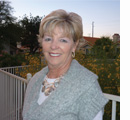 Mary Pat Burson | St. Mary's Hospital
Mary Pat Burson | St. Mary's Hospital
Mary Pat Burson has spent most of her working life at St. Mary’s Medical Center—where she went to nursing school, had her 32-year-long nursing career and is currently serving as a volunteer nurse.
“My biggest inspiration was my aunt,” who was also a nurse, she says. Even as a young child, Burson says, she remembers how her aunt always seemed to know what questions to ask and how to help other people.
Throughout her career with the hospital [which included both Downtown Kansas City and now the Blue Springs locations], she held several positions, such as head nurse of a number of units and as a nursing supervisor. She even helped open new units for the hospital and hire staff members. Burson retired in 2001 and has been volunteering since. “I work in cardiac rehab,” she says, “and most of the staff that are in cardiac rehab, I had hired when I was their supervisor. So I know all the people that I work with.” She works with the patients who come in for cardiac rehab by helping them with the exercise equipment, monitoring their vital signs before and after activities, listening to their concerns, and directing their questions to the people who can answer them.
Having a strong nursing program, she says, is vital to a hospital’s success and the patient’s satisfaction. “Health care is very competitive these days,” she says, “and if people do have a choice in selecting their hospital, they will go where they feel their needs will be met. And having strong nursing care is a key to that.”
By volunteering, Burson says she is able to keep up on what’s going on in health care and nursing, but perhaps the biggest reward, she says, is what she derives from helping people.
“Knowing that you’ve done a good job and seeing people get better,” she says, “it gives me a great deal of satisfaction.”
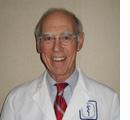 William Jennings | Truman Med/UMKC School of Medicine
William Jennings | Truman Med/UMKC School of Medicine
William Jennings admits he had a philosophical motivation for becoming a doctor. “I saw it as a chance to do something of value for others,” he says. “The opportunity for lifelong learning was also a factor.” He specializes in oncology, hematology and palliative care. Although he recently changed his teaching status to semi-retired, Jennings has been an instructor at the University of Missouri–Kansas City School of Medicine for 25 years. “I love seeing students mature and grow,” he says. “And their developing humanity and watching them learn to communicate with patients and seeing their approach to problem-solving and their enthusiasm about what they’re doing.” Jennings continues to co-instruct a physician, patient and society course at the school.
In addition to his instructional role, Jennings also works at Truman Medical Center in the hemophilia clinic and at the Pratt Regional Medical Center (Cancer Center of Kansas) in Pratt, Kan., for two weeks each month. “I’m from Hutchinson, Kan., and my mother’s side of the family is from Pratt. I’ve been going down there my whole life,” says Jennings.
His career has been immersed in his specialty. “Hematology and medical oncology and the integration of palliative care principles in that practice have been my focus for a long time,” he says, “and I feel challenged by it. Really, it’s the relationships. It’s all about the relationship with patients and the field of nurses and people I work with.” The key to successful care in his field, he explains, is the team approach, involving physicians, nurses, social workers, pastoral care staff and pharmacists. “It’s not just one patient, one physician. It’s looking to address some of these issues with patients earlier than when you’re in the final stages.”